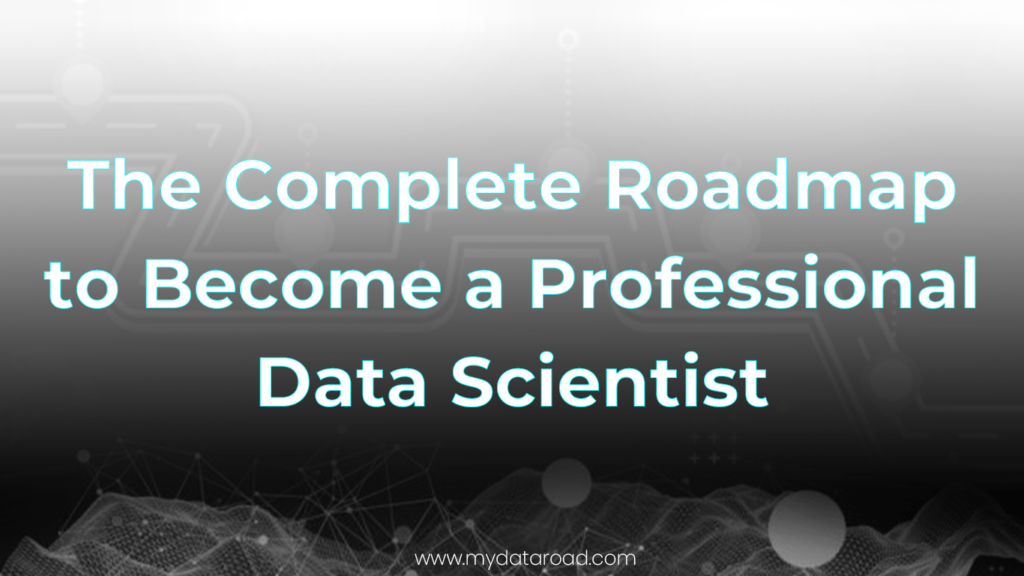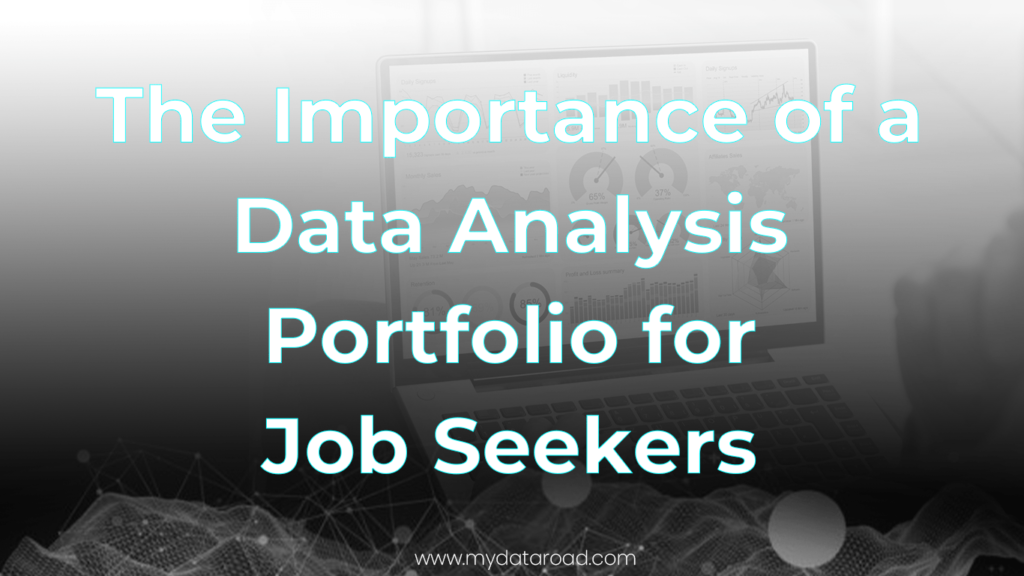As a data analyst, it’s essential to stay current with the latest technologies and adapt your skills, or risk becoming obsolete.
This comprehensive guide charts the data analyst career path, clarifying the role, outlining core skills, and detailing how to future-proof your career amidst rapid technological change.
You’ll gain insight into key topics like:
- Distinguishing data analyst vs data scientist roles
- Understanding data analyst salary ranges and prospects
- Obtaining necessary certifications and education
- Building proficiency in programming languages like Python and R
- Applying machine learning and advanced statistical techniques
- Enhancing data visualization and SQL skills
- Cultivating business acumen and leadership abilities
- Mapping out a plan for lifelong learning and career evolution
Navigating the Data Analyst Path in a Technological Landscape
The role of a data analyst encompasses extracting insights from data to solve business problems and identify opportunities. As technology continues to evolve rapidly, aspiring and current data analysts must continuously adapt their skillsets to stay relevant.
The Data Analyst Role and Core Skills Required
A data analyst is responsible for collecting, cleaning, transforming, and analyzing data to uncover actionable insights. Core skills include:
- Proficiency in tools like Excel, SQL, Python, Tableau
- Statistical analysis and modeling
- Data visualization and storytelling
- Critical thinking and business acumen
A strong foundation in these competencies allows data analysts to organize data, spot trends, and communicate data narratives effectively.
Data Analyst vs. Data Scientist: Clarifying the Distinction
While data analysts focus more on descriptive and diagnostic analysis, data scientists employ predictive modeling and machine learning algorithms. However, there is an overlap in some of their primary skills like coding, statistics, and analytics.
Ultimately, data analysts turn data into insights for business strategy, while data scientists concentrate on building ML models. Both roles work closely together in many organizations.
Charting the Data Science Career Paths
Typical career trajectories for data analysts include:
- Junior Data Analyst
- Data Analyst
- Senior Data Analyst
- Analytics Manager
Some also transition into data engineering or data science roles as they advance their technical prowess. Obtaining credentials like a master’s degree or certificates can further bolster career progression.
Understanding Data Analyst Salary and Career Prospects
The average data analyst salary ranges from $65,000 to $95,000 annually. Compensation is influenced by factors like:
- Industry
- Location
- Years of experience
- Technical and business skills
Strong growth is projected for data analysts as organizations continue to rely more on data-driven decision making.
Education and Certification: Data Analyst Degree and Courses
While some data analysts hold a bachelor’s degree in STEM fields, master’s programs focused on analytics are increasingly popular. Certificates like the Google Data Analytics Professional Certificate also provide essential skills.
Continuous learning is vital to keep up with innovations in AI, machine learning, and cloud platforms.
What is the career path for data analyst?
The typical career path for a data analyst often starts with an entry-level position before progressing into more advanced roles. Here is a common career progression:
Entry-Level Data Analyst
In this beginner role, you would be responsible for collecting, cleaning, and organizing data. Common tasks include:
- Structuring databases
- Running queries to gather insights
- Identifying data quality issues
- Creating basic data visualizations and reports
This entry-level position allows you to gain core data analysis skills that provide a foundation for career advancement.
Senior Data Analyst
With 2-5 years of experience, you can progress to a senior analyst role with more complex responsibilities such as:
- Overseeing major analytics projects end-to-end
- Communicating insights to key stakeholders
- Identifying opportunities for process improvements through data
- Mentoring junior analysts
- Keeping up with the latest data technologies
Analytics Manager
For data analysts interested in leadership roles, becoming an analytics manager is a viable path. In this position, you would:
- Lead an analytics team
- Set goals and strategic vision for the team
- Identify new opportunities for analytics to add value
- Report analytics capabilities to executives
- Manage data analyst training and development
Pursuing formal leadership training can help prepare analysts for this transition.
The career trajectory does not stop here. With demonstrated leadership capabilities and data expertise, progression to director-level or C-suite roles leading enterprise-wide data and analytics is possible for high performers.
How do I become a data analyst?
Becoming a data analyst requires dedication but can be a rewarding career path. Here are the key steps to get started:
Earn a bachelor’s degree
Most data analyst roles require a bachelor’s degree, preferably with an emphasis on statistical, analytical, and technical skills. Fields like mathematics, statistics, computer science, information systems, or finance provide a solid foundation. Consider taking electives in database design, data mining, machine learning, and data visualization.
Learn important data analytics skills
- SQL: Structured Query Language is essential for extracting and manipulating data from databases. Start learning basic SQL statements like SELECT, JOIN, GROUP BY.
- Data visualization: Tools like Tableau, Power BI, and Python let analysts present data visually. Learn basics of charts, dashboards, and storytelling with data.
- Statistical analysis: Brush up on statistical concepts like distributions, statistical testing, regression, etc. R and Python are commonly used.
- Machine learning: Unsupervised and supervised techniques like clustering, random forests, neural networks help uncover insights.
Consider certification
Getting certified in tools like Tableau, Power BI, or Google Analytics demonstrates hands-on abilities to employers. Entry-level options include:
- Google Data Analytics Professional Certificate
- IBM Data Analyst Professional Certificate
- Microsoft Certified: Power BI Data Analyst Associate
Get your first data analyst job
Many begin their careers as data analysts before transitioning into more advanced roles. Look for internships and entry-level jobs to get experience. Develop a portfolio of sample data analysis projects to showcase skills.
Earn a master’s degree
While not required, an advanced degree like a Master’s in Data Analytics or Data Science can open up additional job opportunities with higher salaries. Useful specializations include business analytics, marketing analytics, financial analytics, healthcare analytics, etc.
The path to becoming a data analyst requires dedication but can lead to an exciting, high-growth career. Let me know if you have any other questions!
Can I be a data analyst without a degree?
A degree isn’t required to become a data analyst, but relevant skills and experience are key. Here’s how to get started on the data analyst path without a formal degree:
Build your skills
- Learn SQL, Python, R, Excel, Tableau, Power BI and other data analytics programs through online courses, tutorials, and certifications. Many platforms like Coursera, edX, DataCamp, and Udemy offer affordable options.
- Practice analyzing real-world datasets. Kaggle and data.gov provide free public datasets to work with. Identify patterns in the data, create visualizations, and make data-driven recommendations.
- Consider a coding bootcamp or specialized data analytics program. These intensive, skills-focused programs can prepare you for entry-level data analyst roles.
Showcase your work
- Create a portfolio highlighting your projects and key skills. Include interactive dashboards, data visualizations, SQL queries you’ve written, statistical models, etc.
- Contribute to open source data projects or analytics competitions to demonstrate your abilities.
- Start a blog and share unique data insights from your own analysis. This builds credibility.
Get hands-on experience
- Take on freelance gigs or pro-bono projects to gain real experience. Reach out directly to companies you want to work with.
- Complete a data analytics internship, even if unpaid. This gets your foot in the door.
- Consider transitional roles like data entry or business intelligence analyst before moving into a dedicated data analyst position.
With the right skills and initiative, you can absolutely break into data analytics without a formal degree under your belt. Continuously build up your knowledge, experience and portfolio to make yourself an attractive hire.
sbb-itb-0c864d8
Is data analyst an IT job?
No, a data analyst role is not necessarily an IT (information technology) job, but it does require working closely with IT systems and tools.
As a data analyst, you need to collect, clean, analyze, and interpret data to drive business decisions. To do this effectively, you must be skilled in using various data technologies and platforms.
Here are some key reasons a data analyst role typically involves IT work:
- Accessing Data Sources: Data analysts need to connect to company databases, data warehouses, spreadsheets, and other systems that store data. This requires an understanding of IT infrastructure.
- Data Transformation: Before analysis, raw data must be transformed into the right structure and format. Data analysts need to use ETL (extract, transform, load) tools for these data preparation tasks.
- Analytics Tools Proficiency: Data analysts rely on business intelligence, visualization, and statistical software to analyze and share data insights. These tools include SQL, Python, R, Tableau, Power BI, etc.
So in summary – while a dedicated IT background is not required – data analysts need to leverage various information technologies to be effective. Having database, analytics, data modeling and programming skills are key.
The data analysis field sits at the intersection of IT and business roles. As a data analyst, you enable business decisions by serving as a data-focused liaison between IT data engineers and departmental leaders.
Mastering Data Analyst Skills for Technological Proficiency
As technology continues to evolve rapidly, data analysts must actively build upon their core skillsets to remain competitive and add value in their roles. Mastering key technical areas will equip analysts to derive impactful insights from data using the latest methods and tools.
Programming Skills: Python and R for Data Analysis
Python and R have become essential programming languages for data analysts to learn. Proficiency in Python allows analysts to process and analyze large datasets, build predictive models, and create data visualizations. Meanwhile, R provides strong statistical capabilities to empower advanced analytics. Committing to regular hands-on practice with these languages is key to developing coding fluency. Useful resources include online courses, coding challenges, and real-world project experience.
Advanced Mathematics and Statistics: The Backbone of Data Analysis
Sharpening mathematical and statistical competencies should be a lifelong pursuit for data analysts. Gaining proficiency in calculus, linear algebra and multivariate statistics will allow analysts to thoroughly understand advanced analytical approaches like machine learning algorithms. Dedicate time each week to level up on relevant mathematical concepts and their applications in data analytics.
Machine Learning: An Emerging Tool for Data Analysts
While once solely in the domain of data scientists, machine learning is becoming an increasingly useful tool for data analysts. Gaining familiarity with ML algorithms and model building principles allows analysts to make sophisticated predictions and classifications. Start by learning basic terminology and methodology, then progress to applying pre-built ML models using Python or R packages. Hands-on experimentation is key to skill building.
Data Visualization Techniques: From Basics to Mastery
Strong data visualization aptitude is invaluable for making insights digestible to stakeholders. Master essential principles like appropriate chart types, color use and layout best practices. Then level up on tools like Tableau, Microsoft Power BI and advanced visualization libraries in Python. Regularly analyze sample datasets and dashboards to refine abilities in visual storytelling and impactful delivery of key findings.
SQL and Data Modeling: Essential Training for Data Analysts
SQL skills empower analysts to efficiently organize, query and analyze data of any size or structure. Progress from basic queries to complex joins, aggregations, and stored procedures. Learn optimal approaches for structuring relational databases through logical data modeling. Then apply learnings by building sample data models and writing advanced SQL statements that prepare data for downstream analysis. These foundational capabilities will serve analysts throughout their careers.
By dedicating focused time to building technological expertise across key areas, data analysts can stay ahead of the curve and maximize their career potential even as the field continues advancing rapidly. The learning process never ends, but proactive skill-building pays dividends.
Cultivating Business Acumen and Leadership as a Data Analyst
Data analysts can greatly benefit their careers by developing business acumen and leadership skills alongside their technical expertise. This allows them to provide more strategic value, influence decisions, and advance into management roles.
Developing Your Leadership Skills in Data Analytics
Here are some tips for cultivating leadership abilities as a data analyst:
- Take on more responsibilities by leading analytics projects and mentoring junior team members. This builds management experience.
- Communicate analytics insights clearly to both technical and non-technical audiences using dashboards, presentations, and storytelling. This ability to translate complex data into actionable business insights is key.
- Understand the company’s goals and strategies. Use data to guide strategic decisions rather than just tactical ones. Become a trusted advisor to business leaders.
- Expand your thinking from just “what happened” to “why did it happen and what should we do next.” Provide data-driven strategic recommendations.
- Develop soft skills like emotional intelligence, influence, collaboration, and conflict resolution. Lead meetings, build consensus, and negotiate resourcing.
Business Intelligence for Consultants and Analysts
Using data to enable better business decisions is at the core of business intelligence (BI) and data analytics. Consultants and analysts should:
- Learn about common BI and data analytics frameworks like SWOT analysis, PEST analysis, Porter’s 5 Forces, and McKinsey 7S model. Understand how organizations evaluate strategic decisions.
- Partner with business units to identify key data needs and performance metrics aligned to business objectives and KPIs.
- Maintain a big picture view – use data to uncover insights across the customer journey, supply chain, HR, finance etc. to identify wider opportunities.
Learning Data Governance and Data Strategy
Data analysts should have working knowledge of:
- Data governance – the processes and policies for managing data availability, usability, consistency, security and compliance. This brings structure and ensures data quality.
- Data strategy – the plan for organizing data to serve business objectives. This guides how data is collected, stored, integrated and used across the organization.
Having this strategic view beyond just data analysis allows analysts to recognize upstream data issues and provide more impactful recommendations.
Data-Driven Decision Making in Business
Data analysts are central to data-driven decision making by:
- Building KPI dashboards connected to business goals and strategies
- Using statistical models, machine learning and AI to predict future performance
- Performing sensitivity analysis on key data drivers and assumptions
- Identifying data gaps and risks in strategic plans
- Testing decisions through A/B experiments before large investments
- Tracking performance post-implementation to ensure realized matches projected ROI
Investment Analysis: A Niche Skill for Data Analysts
For data analysts interested in finance, investment analysis entails researching and valuing investment opportunities to predict ROI. Key skills include financial modeling, discounted cash flow analysis, comparative ratio analysis, and risk quantification. This niche skill is valued in investment banks, hedge funds, private equity firms and other investors making data-driven decisions on acquisitions, lending, and portfolio optimization.
Lifelong Learning: Evolving with Data Analytics Trends
Data analytics is a rapidly changing field. As new technologies emerge and business needs evolve, data analysts must continuously update their skills to remain competitive. Here are some tips for lifelong learning as a data analyst:
Career Essentials in Data Analysis: Staying Current
To stay current in your career, focus on building expertise in:
- Statistical analysis and modeling
- Data visualization tools like Tableau, Power BI, and Python libraries
- Cloud data platforms like AWS, GCP, Azure
- Programming languages like Python and R
- Machine learning and AI
Continuously learn new tools and techniques in these areas. Aim to master advanced skills like predictive modeling, text analytics, and data mining.
“Lifelong learning is essential for data analysts to adapt as technologies change. Mastering emerging skills will make you invaluable.”
Data Analyst Master’s Program and Post-Graduate Learning
Pursuing a Master’s in Data Analytics or a post-graduate certification can help you specialize and advance faster. These programs teach highly technical skills like:
- Advanced statistical analysis
- Big data engineering
- Data science applications
- Leadership and communication
Many offer industry partnerships, networking opportunities, and career support.
Online Learning Platforms: Building a Diverse Skillset
Online learning platforms like Coursera, edX, and Udemy offer affordable and flexible course options.
Some valuable certifications include:
- Google Data Analytics Professional Certificate
- IBM Data Science Professional Certificate
- Microsoft Power BI Data Analyst Associate
Use online learning to expand your knowledge cost-effectively.
Networking and Professional Development in Data Analytics
Attending conferences and networking events allows you to discover new innovations and connect with leaders in data analytics.
Some groups to get involved with:
- Data Community DC
- Atlanta Data Science
- Chicago Association of Data Scientists
Staying plugged into the community is vital for growth.
How to Become a Data Analyst with No Experience
If you’re new to data analytics, start by learning Excel, SQL, and data visualization. Complete online courses to build core skills. Pursue entry-level roles like data analyst assistant, junior business analyst, or database administrator. Gain hands-on experience before specializing further. Stay determined through continuous learning.
The field evolves quickly, so being a lifelong learner is key for data analysts to remain competitive and advance in their careers.
Concluding Thoughts: Future-Proofing Your Data Analyst Career
Synthesizing Key Insights for Data Analyst Growth
As a data analyst, continuously developing your skills is essential for staying relevant in a rapidly evolving field. Key takeaways include:
- Master fundamental data analysis competencies like SQL, Python, statistics, data visualization, and machine learning. These form the foundation for growth.
- Complement your technical prowess with soft skills like communication, collaboration, creativity, and critical thinking.
- Proactively learn about emerging technologies like AI and stay on top of industry trends.
- Consider expanding your skillset into adjacent roles like data engineering or data science for more career options.
- Pursue continuing education through courses, certifications, mentorships etc. Learning must be ongoing.
Practical Advice for Ongoing Skill Development
Here are pragmatic tips to advance your data analysis abilities:
- Set aside dedicated time each week for learning. Consistency is key.
- Immerse yourself in the data community by attending meetups, conferences etc.
- Learn by doing – work on personal projects to apply new skills.
- Find a mentor who can offer guidance and feedback.
- Stay curious and open-minded to new ideas and innovations.
Preparing for Tomorrow: A Data Analyst’s Roadmap
To ready yourself for the future as a data analyst:
- Build a strong data foundation before specializing in cutting-edge areas.
- Prototype and experiment with emerging tech like AI/ML models.
- Consider learning multi-disciplinary skills like data engineering and visualization.
- Develop “soft” skills in communication, collaboration and critical thinking.
- Continuously expand your learning. The field keeps evolving rapidly.
The key is to combine specialized data analysis competencies with adaptability to new innovations. Pursue growth while balancing pragmatism.
Related posts
- How to Become a Data Analyst: A Step-by-Step Guide
- Path to Become Data Analyst: Core Skills Uncovered
- Data Analyst’s Roadmap: Navigating Your Career Path
- Become a Data Analyst: Essential Skills Overview

Tech Writer | Data Analyst | Digital Creator



